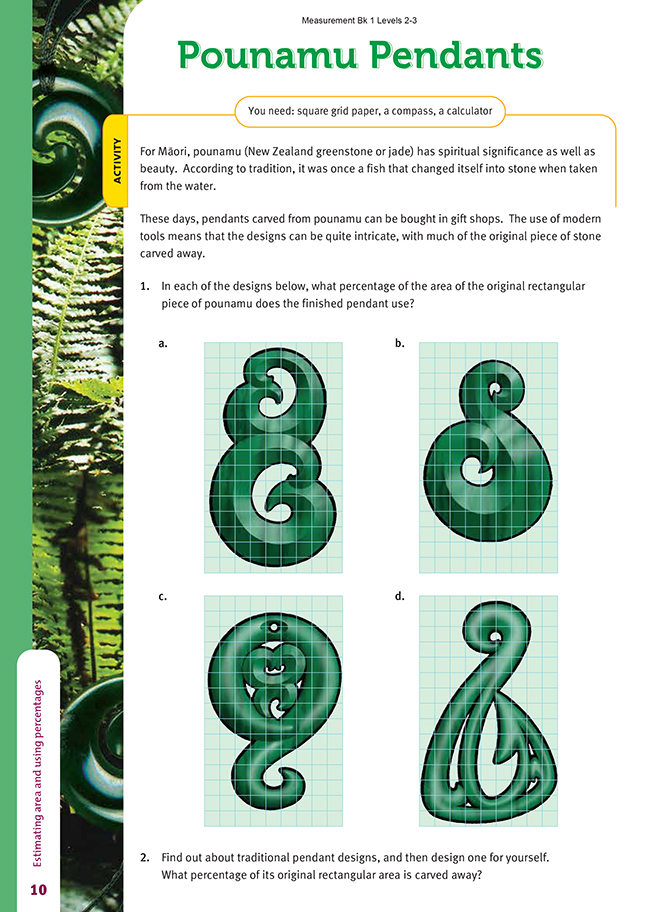This is a level 4 measurement strand activity from the Figure It Out series. It also has an achievement objective from the Level 4 Number strategies and knowledge substrand.
Click on the image to enlarge it. Click again to close. Download PDF (292 KB)
estimate the area of a composite shape
find a percentage
FIO, Level 4+, Measurement, Book Two, Pounamu Pendants, page 10
square grid paper
compass
calculator
This activity asks the students to estimate the percentage of a rectangular shape that remains after it has been carved to make a pendant. The estimate is based on a 2-D illustration of a 3-D object.
When doing question 1, the students need to follow these steps:
- Find the area of the shaded rectangle behind the carved pendant.
- Count the squares and part squares covered by the pendant to get an estimate of the total area it covers.
- Divide the area of the pendant by the area of the rectangle.
- Express this result as a percentage.
The standard method for estimating area by counting squares is to count every square that is at least halfcovered by the object. A second method is to visually estimate what part of each square is covered by the object, to the nearest tenth (for example, 0.3), and then to add these parts along with the wholes. You could ask your students to try both methods (the second being good for practice at adding decimals) and see
whether they think one gives a better result than the other. For a similar task, see Activity One of The Big Drip (pages 12-13 of the students' book).
The students' estimates should fall within the range given in the Answers.
Question 2 asks the students to design a pendant on square grid paper, with the design covering 50 percent of the rectangular area that encloses it. This activity encourages creative as well as mathematical skills. The finished designs could be coloured and displayed or used as the basis for making clay or play dough pendants.
Cross-curricular links
This activity could be used as part of a study of Māori arts and crafts. Students could investigate the special significance of pounamu, the way in which carvers in former times made pendants, and the way in which present-day carvers make them.
Achievement Objectives
Social Studies
- demonstrate knowledge and understandings of why and how individuals and groups pass on and sustain their culture and heritage (Culture and Heritage, level 4)
Arts and Crafts
- investigate the purposes of objects and images in past and present cultures and identify contexts in which they were or are made, viewed, and valued (Understanding the Visual Arts in Context, level 4)
Answers to Activity
1. Answers will vary. Suggested ranges are:
a. 58-62%
b. 49-51%
c. 55-57%
d. 52-54%
2. Practical activity
